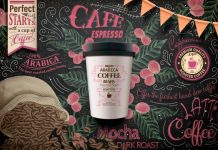Since a few years ago, Zumba has turned into one of the most popular guided physical activities globally. In 2012, more than 12 million people practiced Zumba is one of the more than 100,000 partner centers worldwide - more than 125 countries. Its laid-back nature and physical benefits derived from aerobic exercise have made this mix of dance and aerobic exercise a favorite.
This article will define Zumba, explain where it comes from, what types are there, and what benefits you can get if you practice Zumba. Fortunately, its high popularity has made it an object of study within the medical and scientific community.
Origin of Zumba
Zumba is a physical activity that originated in Colombia, during the 90s. A well-known physical trainer, Alberto “Beto” Pérez, was its inventor, but he claims that this happened by chance. He had a traditional aerobics class to teach, but he forgot the music he usually worked with, so he replaced it with traditional Latin music that he kept in his car.
Read also: 8 Different Types of Meditation and their Benefits
The success of this first class, according to Beto Pérez, lies in the fact that the activity was much freer than a traditional aerobics class: There was no correct way to do the movements, but the music allowed us to maintain a good rhythm and lose ourselves in the fun of the activity.
Zumba is now considered to be one of the best known physical activities in the world. In 2012, Zumba became the ninth most practiced physical activity - "fitness" - in the world. The number of people in each group, the music genre, the accessibility of the activity, and the different modalities make each one of these “Latin aerobics” classes into a real party in each session.
The 9 Main Types of Zumba
We have mentioned that there are different modalities of Zumba. Most of them focus on giving accessibility to a specific group that could have difficulties with the more classic Zumba, such as people with movement difficulties -like, the elderly. But there are also types of Zumba that play with other elements, such as the environment (on the track, sitting, or even in the water) or the addition of tools to complement the class.
There are several primary varieties of Zumba:
Classic Zumba
The original Zumba, which combines aerobic movements with Latin and African rhythms and music. Its festive and relaxed atmosphere means that the practitioners feel looser and enjoy the activity more in addition to being a good exercise.
Zumba Step
The Zumba Step includes a new component to the classic Zumba class, the “step.” It is a small, very low, and elongated stool, which helps focus the exercise on the lower body, legs, and buttocks.
Zumba Toning
Zumba Toning is another modality of Zumba. To alter the lesson a little bit while keeping the framework of Latin music and the celebratory atmosphere, an additional component is included. In Zumba Toning, participants carry a “Toning Stick,” a sand-filled dumbbell that also functions as maracas and increases the difficulty and physical demand of the activity.
AquaZumba
Some aerobic activities are not the most suitable for individuals with joint issues or who are overweight. The AquaZumba significantly lessens these issues, maintaining the philosophy of aerobic exercise and Latin rhythms, but in this case, it is done in the pool.
Zumba Sentao
The Zumba Sentao, as its name suggests, is a Zumba class that is carried out in a sitting position. It is perfect for people who have leg issues or limited mobility, but it is also a terrific method for people who want to start in the Zumba world, to begin with a workout that demands less effort and physical coordination.
Zumba Gold and Zumba Gold Toning
The Zumba and Zumba Toning Gold version is specially designed for those who find it difficult to pace themselves in traditional classes, whether due to illness, aging or inexperience, so it is also ideal to try a first Zumba class if not, we are very proud of our physical condition.
Zumba Kids and Zumba Kids, Jr.
There are also Zumba modalities designed for the little ones. The Zumba Kids and Zumba Kids Jr. activities are for children ages 7-11 in the Kids class and children ages 4-6 in the Kids Jr. class.
These classes try not only to educate children about Zumba but also to practice psychomotor skills, group dynamics, and other cultures' exploration.
Zumbini
The Zumbini is a Zumba class designed for parents and kids ages 0 to 4. The exercises are very relaxed and focused on infants' cognitive and motor development and in the typical Zumba exercise framework. Today, it is even accompanied by reading material and applications on mobile phones.
Zumba in the Circuit
Also read: How Many Calories Does One Burn Jumping Rope?
Zumba in the Circuit could be described as a mix between Crossfit and Zumba. Specific physical activity modular circuits are utilized, along a route to be completed throughout the class. They are classes of greater intensity and physical requirements than the classic Zumba classes.
Zumba Benefits
Zumba is an aerobic-type activity comparable to running, using a stationary bike, or other activities in which most of the physical effort is made, and it is ideal for improving cardiovascular health. Weight loss is also remarkable if you adapt to the habit of continuous aerobic activity since each Zumba class allows you to burn between 400 and 600 calories per session.
Aerobic exercise also improves our respiratory capacity and cardiovascular health and reduces anxiety and its related symptoms. In particular, Zumba is an aerobic exercise in which the vast majority of the body is tried to be exercised through movement, which promotes flexibility and body awareness, proprioception.
The social, festive, and relaxed atmosphere of Zumba classes makes this activity especially suitable for those looking for a group with which to exercise in a relaxed way, which reduces social anxiety and can even be a good place to meet people with similar interests.
Adapted and translated by The Cop Cart Staff
Sources: Azsalud








